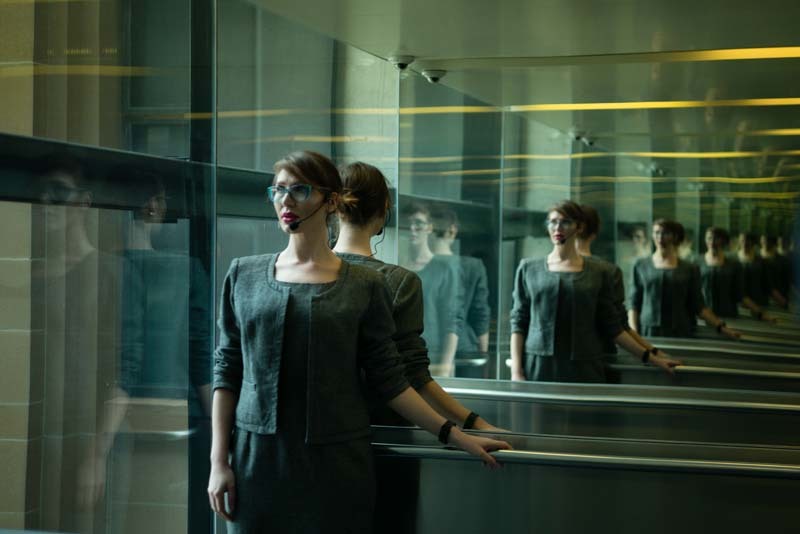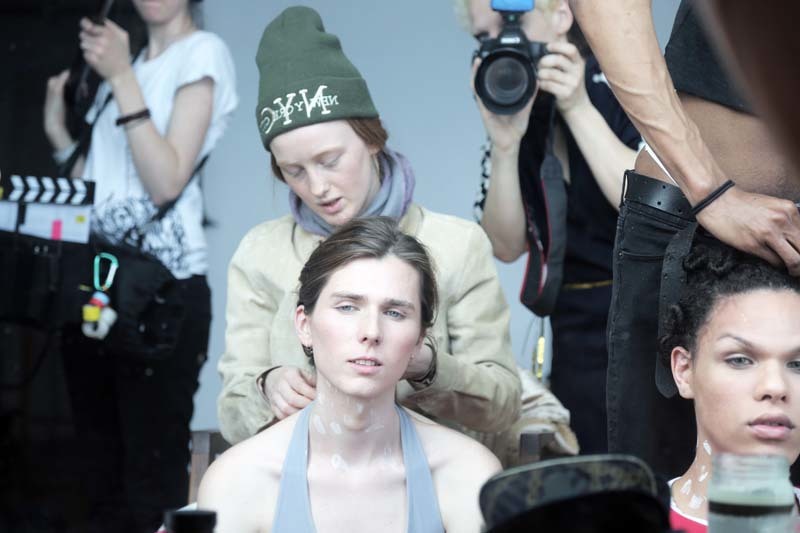The art world isn’t really sure where to place praise for the world’s first self portrait. The practically minded among us might award it to Philadelphia’s Robert Cornelius, who captured his 30-year-old self in 1839, but creatives were immortalising their own image long before the camera was invented. The Egyptians, Greeks and Romans were all fans of a selfie, although a lot has changed between Pharaoh Akhenaten’s chief sculptor Bak giving it a go in 1365 BC and the iPhone 4 introducing their front facing camera in 2010.
But in the seven years since it became a staple of the digital age, or the “autograph of the 21st century” as Paris Hilton once said, the credit we afford the selfie has significantly diminished. While we might still discuss the tender introspection of Frida Kahlo’s lifelong obsession with the genre, we also roll our eyes at anyone whose camera roll is too cluttered with their own face.
For many artists though, this is a fresh world to explore. In the new series The Glass Bedroom, we’re introduced to six young Australian creatives working in this emerging space. For Amy Louise, Rowan Oliver, Lexi Laphor, Damiano Dentice, Carolyn Duchene and Giselle Stanborough, “glass bedrooms” are defined as their transparent worlds where the divide between practice and existence becomes obsolete. Previously a self portrait was a single static moment, caught and preserved, here the art is every waking moment, curated, crafted and shared to hundreds of thousands of followers.
We spoke to producer Bethany Bruce and director Kate Blackmore about how the internet turned intimacy and illusion into an art form.

I wanted to start by chatting about the juxtaposition in how we see classic self-portraits and selfies: how do you guys meet the judgement passed about selfies in general?
Kate: The “selfie generation” has often been accused of being entitled, narcissistic, self interested, self focused and lazy. CNN commentator Roy Peter Clark declared, “Maybe the connotation of selfie should be selfish, self-absorbed, narcissistic, the centre of our own universe, a hall of mirrors in which each reflection is our own.”
They brought about a kind of moral panic in the media which I’m fascinated by – why are people so threatened by selfies? I think it’s to do with a fear of young people and new ideas: the selfie is a means for self-expression which lets people — especially women, whose views on how they are supposed to look are heavily shaped by societal standards — engage in “self-fashioning.”
READ: meet @ilovebrucewillis, the margot tenenbaum of instagram
What do you mean by “glass bedroom” specifically?
Kate: I started thinking about making this series after reading an article by media theorist Dr Erika Pearson, who likens the way people craft their online identities to the performance of an actor on a stage. She uses the metaphor of the “glass bedroom” to describe how on social media sites the front-stage and the back-stage areas are combined, creating a space which is partially public and private. Inside this space intimate exchanges occur with distant friends and strangers moving past transparent walls. Performances in these online spaces generate an aura of intimacy whilst maintaining a safe distance.
This idea plays out in all the episodes but it’s particularly striking in Amy Louise’s (@ilovebrucewillis) who has an ‘audience’ of 162k but is careful never to reveal any intimate details of her life for fear of trolling. So she’s developed a mysterious and enigmatic online persona, giving people just enough of herself to keep them interested.

A lot of this theory unfolds in your discussion of the self-portrait, how do you feel Instagram changed our understanding of that?
Kate: Because of the ubiquity of smartphones, anyone can be the photographer, director and subject of a photo all at the same time. Amy Louise brings up the implications this has for women of colour, she says “throughout history the mode of taking a portrait has changed. It’s more accessible now. It’s not just for rich people who can hire someone to paint a portrait of them or have a photographer take photos of them.”
The selfie is the first visual product of the new networked global youth culture. The artists profiled in this series have a sophisticated understanding of the medium, to them the selfie is all about sharing and community.
Considering these worlds are largely built on fantasy, was there any concern from the subjects about showing the working behind their art?
Kate: The series took shape through constant dialogue and collaboration with the artists and I think this process made them all comfortable in sharing elements of their life and their process with the camera. Lexi Laphor (@femmeasfuck) raises the important point that online worlds are idealistic and fantastical and it’s rare to see people at their worst, this can create warped perceptions which can have negative implications on mental health. But for Carolyn Duchene (@carolynduchene), Instagram can also be a source of comfort, she sees the platform as a kind of dream space that she can escape to whenever her life is chaotic.

How much do you think these artist’s works are about personal introspection, compared with playing with the idea of fame?
Kate: Each of the artists are using Instagram as a medium to express ideas. So there’s definitely an element of personal introspection in their posts. They all seem to enjoy the visibility provided by Instagram – Rowan Oliver says “Everyone can feel watched, because that’s kind of what they’ve been promised their whole lives…every Millennial has grown up thinking that they’re going to be famous.”
Beth: Playing with the idea of fame is a big part of what each artist is doing in their work. Damiano (@y2kangel) says that he’d love to be famous and the feeling of wanting to be loved unconditionally for almost no reason at all really, is a basic human instinct. I found it interesting Giselle’s (@lozein_official) take on our times – the fact that a generation ago people were obsessed with surveillance and now the primary fear is that no-one is watching us at all.
Catch ‘The Class Bedroom’ here.
Credits
Text Wendy Syfret
Images courtesy of ABC.
